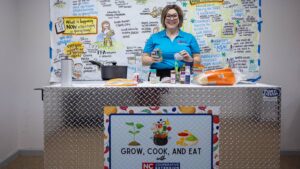
Cooking Up Resilience
From shelf-stable recipes and food preservation to disaster planning and a mobile kitchen, an NC State’s Extension expert helps …

El inglés es el idioma de control de esta página. En la medida en que haya algún conflicto entre la traducción al inglés y la traducción, el inglés prevalece.
Al hacer clic en el enlace de traducción se activa un servicio de traducción gratuito para convertir la página al español. Al igual que con cualquier traducción por Internet, la conversión no es sensible al contexto y puede que no traduzca el texto en su significado original. NC State Extension no garantiza la exactitud del texto traducido. Por favor, tenga en cuenta que algunas aplicaciones y/o servicios pueden no funcionar como se espera cuando se traducen.
Inglês é o idioma de controle desta página. Na medida que haja algum conflito entre o texto original em Inglês e a tradução, o Inglês prevalece.
Ao clicar no link de tradução, um serviço gratuito de tradução será ativado para converter a página para o Português. Como em qualquer tradução pela internet, a conversão não é sensivel ao contexto e pode não ocorrer a tradução para o significado orginal. O serviço de Extensão da Carolina do Norte (NC State Extension) não garante a exatidão do texto traduzido. Por favor, observe que algumas funções ou serviços podem não funcionar como esperado após a tradução.
English is the controlling language of this page. To the extent there is any conflict between the English text and the translation, English controls.
Clicking on the translation link activates a free translation service to convert the page to Spanish. As with any Internet translation, the conversion is not context-sensitive and may not translate the text to its original meaning. NC State Extension does not guarantee the accuracy of the translated text. Please note that some applications and/or services may not function as expected when translated.
Collapse ▲
On September 27, 2024, Hurricane Helene unleashed historic rainfall, flooding and landslides across Western North Carolina. The devastation …

Hemlock woolly adelgid is a non-native invasive insect killing hemlock trees in eastern North America. Learn …

Properly terminating your cover crop is crucial for success on your farm. You must select a method that fits your current practices and equipment constraints. …

From shelf-stable recipes and food preservation to disaster planning and a mobile kitchen, an NC State’s Extension expert helps …
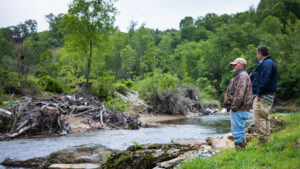
When the remnants of Hurricane Helene tore through western North Carolina last fall, the devastation was staggering — roads …
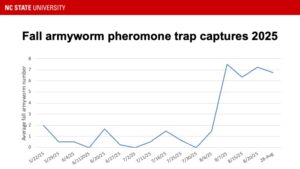
Light and pheromone traps are tools that help us know when certain insects are active in crops like cotton, …
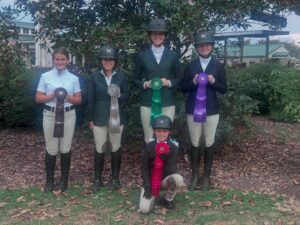
2025 Southern Regional Horse Show Results The NC 4-H Horse Program had 24 exhibitors compete and place in the Hunter, …

In the foothills of Western North Carolina the local food landscape is a testament to the power of community …
Pod maturity images from August 27 and 28 sampling. Samples collected August 27 or …
The following is an e-mail note to NC State Extension agents on peanut maturity. North Carolina State University Mail – …
The following are slides from a recent presentation to Birdsong buying points people. The second set of slides has …
Development, Maturity Over the past week, rainfall across the state has ranged from 0.01″ (Darlington & Horry Cty), 0.2 to …

The North Carolina 4-H Horse Program had a successful showing at the 2025 Southern Regional 4-H Horse Championships Educational …
![Cover photo for 2025 Apple Maturity Pilot Program [8.27.25]](https://www.ces.ncsu.edu/wp-content/uploads/2025/08/25PAM_RedDel_Grouped_8.26.25-204x300.png)
In cooperation with the Henderson County Master Pomology Program, we initiated an effort to monitor apple fruit maturity in …

How can we reduce the risk of head scab in our wheat? There are a few things we can …

With the exception of the brown marmorated stink bug (BMSB), trap captures of key pests declined during the past …
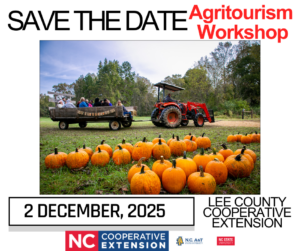
Join NC State Extension in Lee County on December 2nd for our first half day workshop on Agritourism with …

We recently invited volunteers and Extension professionals across North Carolina to help guide the future direction of the NC State …

The Pesticide Safety – NC State Extension Farm Safety & Health (ncsu.edu) is hosting a one-day, in-person learning workshop for Spanish speakers to prepare for …
NC State Extension's work helps fuel the N.C. economy.